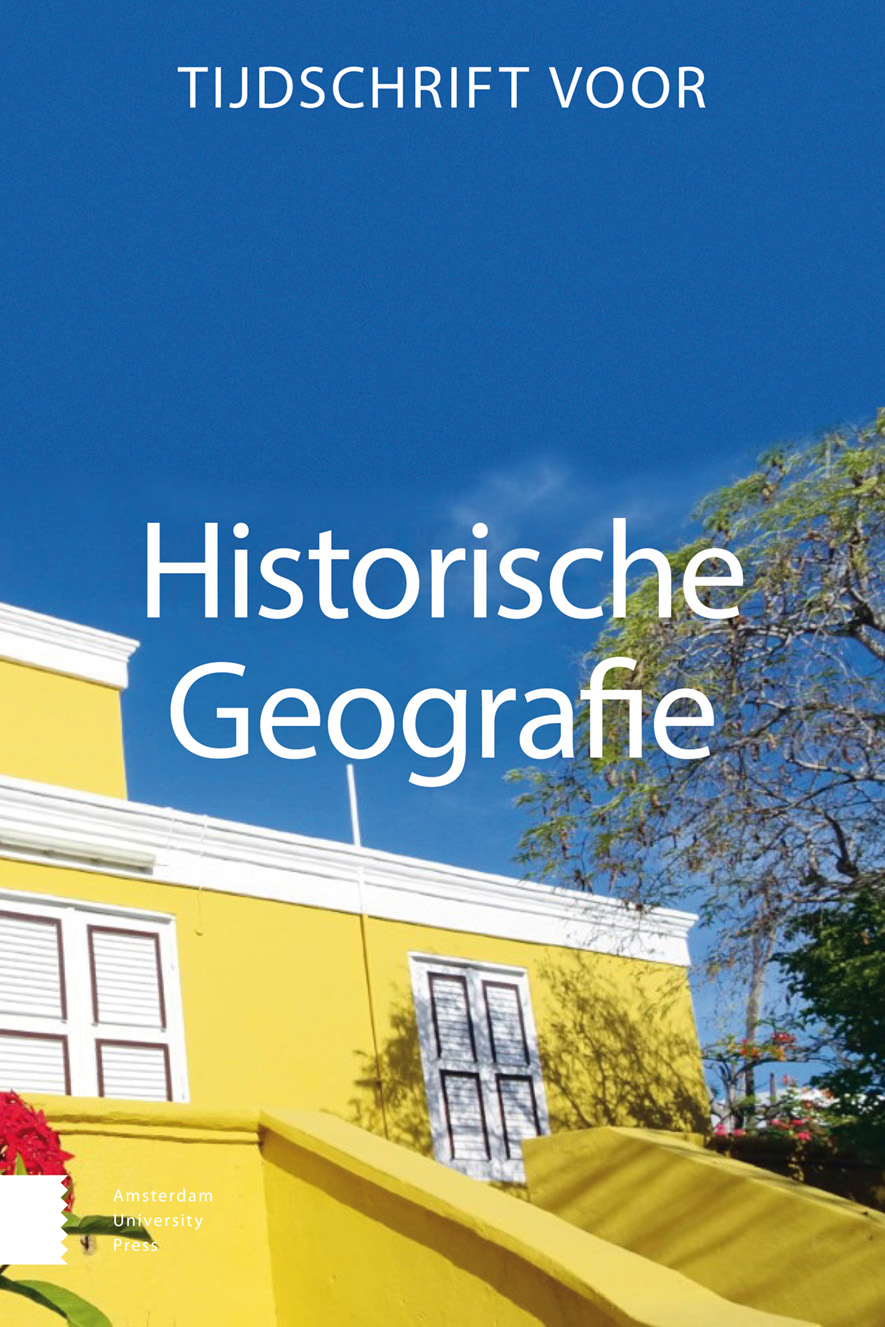- Home
- A-Z Publications
- Tijdschrift voor Historische Geografie
- Previous Issues
- Volume 10, Issue 1, 2025
Tijdschrift voor Historische Geografie - Volume 10, Issue 1, 2025
Volume 10, Issue 1, 2025
- Redactioneel
-
- Artikel
-
-
-
Grienden als levensader van de Vijfheerenlanden
More LessAuthor: Elizabeth VerkuilAbstractWillow coppice, the beating heart of the Vijfheerenlanden? Willow coppice, their role in the regional economy and the meaning for society
The landscape of the Vijfheerenlanden predominantly consists of peaton-clay soils. The water management in some polders is poor, creating favourable conditions for the thriving of osier beds. Due to poor employment opportunities, the osier culture emerged as a viable option. There were two types of osier beds: cutting beds and coppicing beds, each with distinct methods of planting, maintenance, harvesting, and utilization. A significant portion of the osier crop was supplied to hoop makers and basket weavers. In later times, a large portion was utilized as withies in dykes. This research concludes that osier beds have been of significant value in the Vijfheerenlanden and that there are opportunities to preserve the osier culture for the future.
-
-
-
Klein Zwitserland in Nederland: een toeristisch fenomeen
More LessAuthor: Henk BaasAbstract‘Klein Zwitserland’ (Little Switzerland) in the Netherlands: a tourist phenomenon
As an experiment, we asked ChatGPT to write a 1000-word article about ‘Klein Zwitserland’ (Little Switzerland). The prompt (asked question) was as follows: Can you write an article of 1000 words for me about the phenomenon of ‘Klein Zwitserland’, which many places with height differences in the Netherlands used to present themselves for tourists. When did this arise and why? And how many places call themselves ‘Klein Zwitserland’? Then I asked two follow-up questions: Can you provide me with the sources for the article? and Can you generate an image of a ‘Klein Zwitserland’ for me. Below is the article created by ChatGPT. At the end we provide some editorial commentary on the article, and on the use of this type of Generative ai.
-
- Reeks Landschap op Papier
-
-
-
De Blokjeskaart: de eerste nationale plankaart over de ruimtelijke inrichting van Nederland
More LessAuthors: Yvonne van Mil & Reinout RutteAbstractThe ‘Blokjeskaart’: the first national planning map on the spatial layout of the Netherlands
The so-called Blokjeskaart, published in 1966 as part of the Second Policy Document on Spatial Planning in the Netherlands, is the first detailed national spatial planning map of the Netherlands and also the first comprehensive government policy statement on the future layout of the Netherlands. This article briefly outlines how this map is an amalgam of diverse sources and of various mapping and research traditions, such as the cartogram from the late 19th century, survey-before-plan cartographic research from the 1920s and 1930s and the so-called balls map, which shows the distribution of population concentrations across the Netherlands around 2000.
-
-
- Recensie
-
- Literatuuroverzicht
-
- Artikel
-
Most Read This Month


